Weekend Edition #25: Why going green isn't so black and white
Talking about sustainability in fashion: what does it mean and why should we care?
Hello!
A newsletter reader and friend (hi Anne!) reached out a few weeks ago about revamping her wardrobe thanks to starting a new job (congratulations!). She asked my thoughts about Faherty and Boden, and whether they were good to support. She’d received an email about Boden’s sustainability efforts but wasn’t sure if she could trust them.1 And to be honest, I wasn’t sure either. I figured if it were confusing for me, someone who works in the industry and had a “sustainable” baby clothing brand for over five years, it was a worthy topic for us to discuss!
The United Nations Brundtland Commission defined sustainability in 1987 as "meeting the needs of the present without compromising the ability of future generations to meet their own needs". Sustainability is often considered to have three dimensions: environmental, economic, and social.
When my best friend and I created Olen Organic in 2015, “sustainable fashion” was not mainstream. It felt like fashion was still stuck in the 1970s, when a certain type of mom stocked her pantry with “health foods,” like quinoa or whole wheat bread. It seems funny now that such common foods were once considered crunchy. We wanted the same thing for fashion: better “ingredients,” mindfully made. Over the last decade, the industry did make major strides improving fabric quality and sourcing. However, at the same time, fast fashion companies grew like fast food chains: they became humongous, cheap, and everywhere.
The last 30 years saw very smart business people (let’s be honest, mostly businessmen) realize how much value they could unlock by turning clothing into a commodity. This “more is more” model created a massive industry that fuels excess consumption and the rise of an environmentally destructive system of overproduction.2 Using organic cotton, reducing water usage, and recycling plastic into threads is necessary, but when done millions of times over and over, it is still not sustainable.
So is it even possible to be a sustainable fashion brand?
After my friend reached out, I researched Boden. I knew their cute striped tops and floral dresses from ads served to me on Instagram, but I didn’t know anything about their business. Turns out, the brand was founded in 1991 by Johnnie Boden, and is still owned by him and his family today. Here’s what Johnnie says about sustainability:
“The greenest thing you can do? Not buy any clothes.”
(That’s the sound of a record scratch you’re hearing.)
Not buying clothes might be possible in the short term, but it is certainly not sustainable in the long run. We simply can’t go around naked. So what can we do?
We can buy better. We can be conscientious consumers and shop smarter.
Here’s how, with my reasoning below:
Shop Scandi
Shop Second-hand
Steer Clear of China
Shop Small
Shop Scandi. All public companies really only have one goal, to maximize shareholder profit through growth. However, European, and specifically Scandanavian companies, have stronger sustainability commitments, because of their social values and the regulatory corporate environment. The US "lacks a cohesive federal or state ESG framework (short for Environmental, Social and Governance), relying on a patchwork of laws and a fragmented policy landscape,” and only requires a company to assess the environmental impact on an organization’s financial performance (“single materiality”). In comparison, the EU has a comprehensive Corporate Sutstinability Reporting Directive and formally adopted the concept of “double materiality” in 2019, which considers the financial impact on a company and it’s impact on the community and environment.3 I am a fan of Toteme, a hot company founded by a cool Swede, Elin Kling. It is still majority-owned by her and her husband, but Altor (a private equity firm focused on investing in medium-sized companies in the Nordic region), took a minority stake in 2021. I also buy from Ganni, a brand based in Copenhagen (although now owned by LVMH-backed private equity firm L. Catterton). The founder now focuses on “planetary responsibility” at the company.4 Ganni actually insists they are not a sustainable company, but instead “are committed every day to make better choices across the business to minimize our social and environmental impact. We see this as our moral obligation.” Norway’s wealth fund is Nike’s ninth-biggest shareholder, and they just supported a proposal “to consider joining binding agreements with supply chain workers to better address human rights issues in high-risk countries,” which was rejected by Nike’s other shareholders presumably because it might impede profits. Norway’s wealth fund also voted against Nike’s executive compensation package, which they called “excessive” (it passed and included $29.2 million for Nike’s CEO John Donahoe, who Bloomberg just called “The Man Who Made Nike Uncool.” AND who just announced he’s stepping to down!). Norway’s votes don’t surprise me, given Scandinavian ideals on sustainability, egalitarianism, and environmentalism. These also formed Olen Organic’s philosophy, and we chose our name to represent them - Olen means “I am” in Norwegian. I try to vote with my dollars and support European, especially Scandinavian companies, when possible.
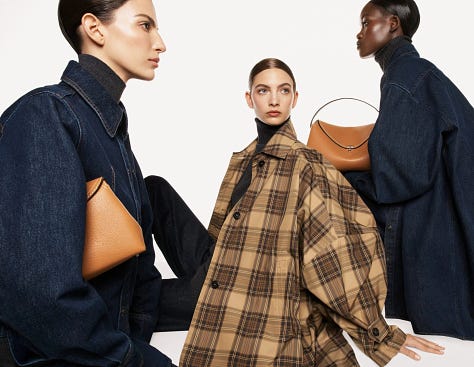
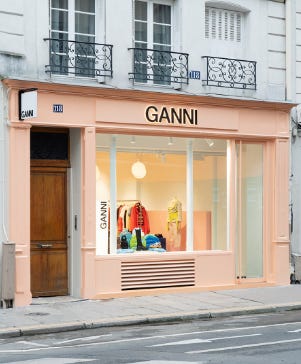

Shop second-hand. This might mean at your local thrift store, or on resale marketplace sites like Grailed or the Real Real. It might mean shopping at brands that offer resale like Patagonia (our Olen Pre-loved page on our site was very popular). Patagonia is probably one of the biggest brands on the planet that comes closest to being as sustainable as possible. A few years ago they restructured their entire business to make Earth their only shareholder. Genius PR, yes, but from what I can tell, also legit. But even their resale program, one of the most advanced in the industry, is estimated at only 1% of their total sales. Upcycling is an offshoot of resale and second-hand fashion, where designers create new pieces out of deadstock fabric (leftover yardage from previous manufacturing runs), or stained or torn garments. B Sides, started by Stacy Daily, my very first boss at A&F, reworks “authentic vintage Levi’s 501’s, collected in the American West.” (For their original denim, they source from family-owned mills in Georgia and North Carolina that have provided workwear textiles to farm supply stores since the 19th century.) RE/DONE repurposes “preloved vintage and creates limited-edition luxury designs with a commitment to mindful production, sustainability, and circular fashion.” Alex Mill, which is designed by the former Madewell/J.Crew head of design
(and run by legendary merchant Mickey Drexler’s son, Alex), has an entire program devoted to upcycling called Re-Work and to date, they’ve “upcycled more than 4,000 garments into one-of-a-kind designs.” They also encourage their customers to shop vintage and share a list of Somsack’s favorite vintage shops in NYC. Love that. However, there is one note of caution around upcycling (more for the maker than the buyer). While fashion doesn’t have great intellectual property laws, anything including logos or tags is protected under trademark and copyright law. Louis Vuitton, Levi’s, and Chanel have all brought lawsuits against brands selling refashioned product. Chanel issued a statement saying, “[Upcycling is] a positive trend that we continue to explore, and we have always been conscious of the need to strike a balance between protecting the rights of our brand and the rights of others to create and trade freely. However, the use of elements stamped with the Chanel logo is sometimes simply an unauthorized misappropriation of our trademarks.” Irene Calboli, a professor of law at Texas A&M University, counters, “If we want to move from a linear to a circular economy, we need to upcycle. The fact that intellectual property law gets in the way of those who want to upcycle or recycle is just wrong.”5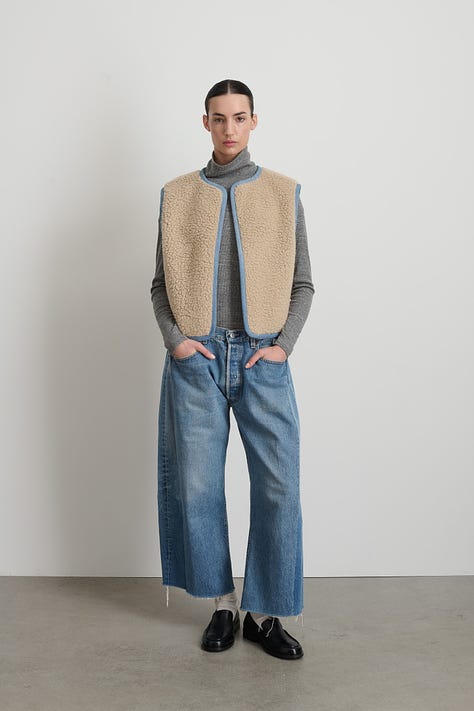
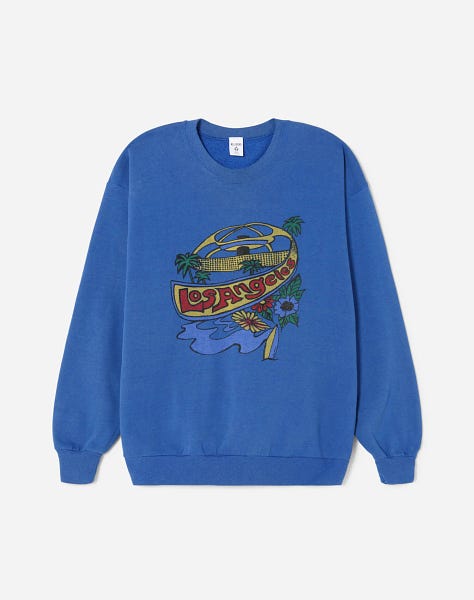
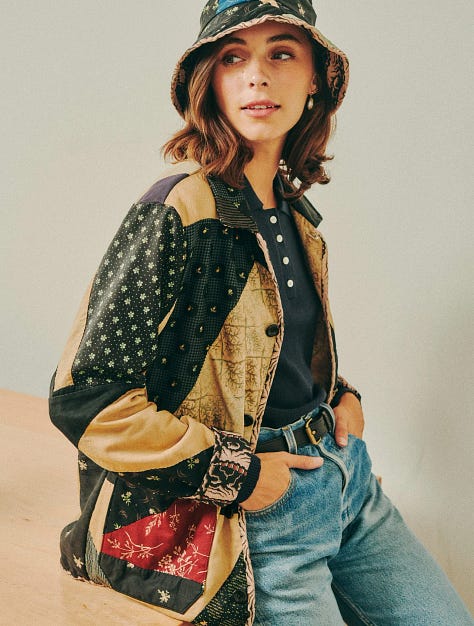
B Sides one-of-a-kind vintage blue jeans and beautiful Japanese wool sherpa vest made in NYC, Re/Done's upcycled sweatshirt, Alex Mill's re-worked jacket. Steer clear of China. Specifically, clothing made from cotton and viscose. These fabrics primarily come from the Uyghur region, where there have been significant human rights abuses over the years. The US passed a law banning the import of these fabrics, but compliance is spotty. You can tell the origin of a garment by looking at the tag, although this isn’t perfect because cotton might come from China, but the garment could be made in the same company’s factories in Vietnam, which is what ends up on the label. There are also exceptions to the rule: Lafayette 148 owns their own factory in China and makes beautiful clothes in responsible, small runs at fair prices. But, on the whole, it’s best to just steer clear. Additionally, these problems aren’t just in China. Luxury companies are currently being exposed for using sweatshops in Italy.6 Honestly, this is probably the murkiest area for consumers to be knowledgeable. I’ve always worked for companies with strong corporate social responsibility requirements and the investment and infrastructure to investigate and enforce them. But greenwashing is a rampant issue, and there’s no easy way to know who is doing it and who isn’t.7 Which brings me to my last suggestion.
Shop small. I don’t know about you, but I’m likely not reading a governance report on a brand’s parent company’s website before purchasing a new sweater. What I will do, what I enjoy doing, is reading the About Us pages on new brands I’ve discovered. I recently bought an &Daughter sweater shell I found on Net-a-Porter (sidenote - this is why wholesale distribution is still important in the direct-to-consumer era: customer discovery and acquisition). I went to their website to see what the brand was all about before purchasing and discovered that “Buffy Reid and her father founded &Daughter ten years ago to create a forever sweater. In partnership with Scottish and Irish mills and makers, the name &Daughter reflects the beauty of a skill and craft passed from generation to generation.” They walk the walk. Kule is another brand I love, initially founded by Nikki Kule in 2001 as a childrenswear brand and relaunched in 2015 as a brand for the whole fam. (My mom and I both own and love several styles.) They “work with small factories around the world who love our products as much as we do. From the family-owned facility in Portugal that produces our signature stripe tees to our 100-year-old American tote supplier, we produce pieces that will stand the test of time, making you smile for years to come.” Yes, large companies might say the same thing, but when the founder is answering emails and posting on Instagram and her name is on the label, I am inclined to trust them more. Plus, the product is worth it. Which is the reason we are all here.
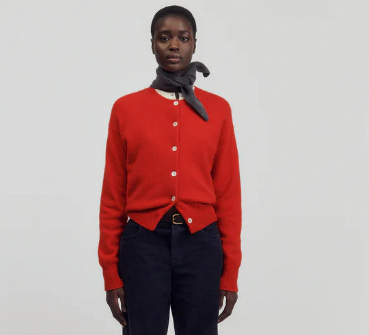
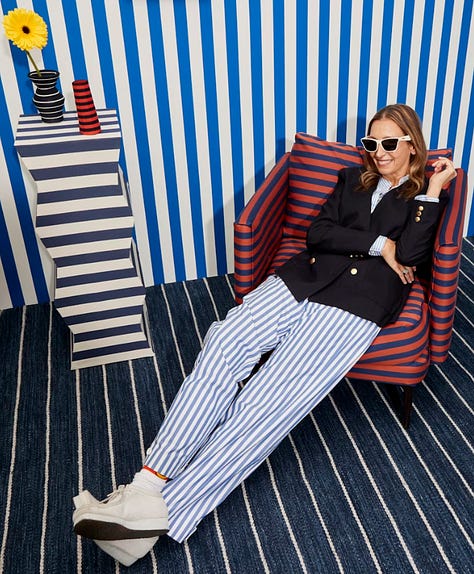
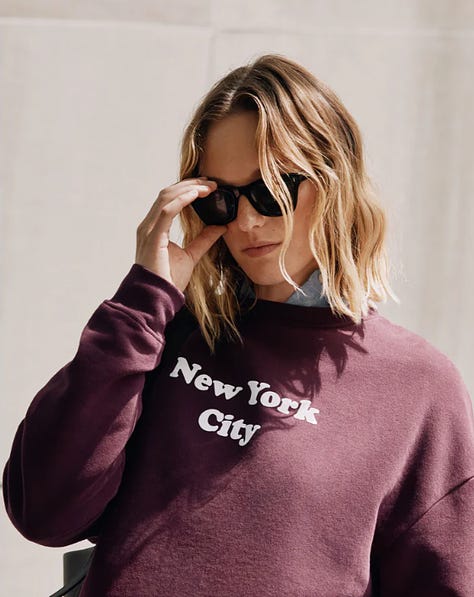
While writing this post, I thought about something I hadn’t in years. There used to be a small thrift shop in my town called Carousel (great name btw), and my mom used to take me there for “new” clothes. In dredging up the memories, I recalled how those trips felt like shopping sprees at Saks. I’d dig through the racks, unearthing treasures like gold mined from the river. I can still remember the smell. I can still remember the feeling. Discovery. Excitement. Something special. I also shopped at the mall. I had plenty of sparkly things from Limited Too. But even though the pieces from Carousel were less expensive, I valued them more. They were my prized possessions.
Prized possessions should fill our closet, be shared among friends and siblings, passed down to nieces and nephews. Turned into something new. These kinds of clothes sustain my love of fashion and shopping and self-expression. They sustain me, and I hope fashion can sustain all of us who wear and make it, for a very long time.
x Lindsay
Faherty is owned and operated by two brothers, Alex and Mike, and Kerry, Alex’s wife. Their mom designed their first few stores, which is so cool!
My friend, Christina, wrote about how overconsumption is killing the creativity of fashion designers, and thus the industry at large. I love how she compares designer’s output to that of a writer or actor and monetization strategies to the art world (which thrives on underconsumption) - check it out!
https://www.manifestclimate.com/blog/what-is-single-and-double-materiality/
https://agfundernews.com/qa-biomaterials-startups-are-not-necessarily-configured-for-venture-capital-says-ganni-co-founder
https://www.reuters.com/business/retail-consumer/italian-court-seeks-tougher-checks-luxury-suppliers-after-worker-exploitation-2024-06-12/
https://www.un.org/en/climatechange/science/climate-issues/greenwashing#:~:text=By%20misleading%20the%20public%20to,some%20more%20obvious%20than%20others.





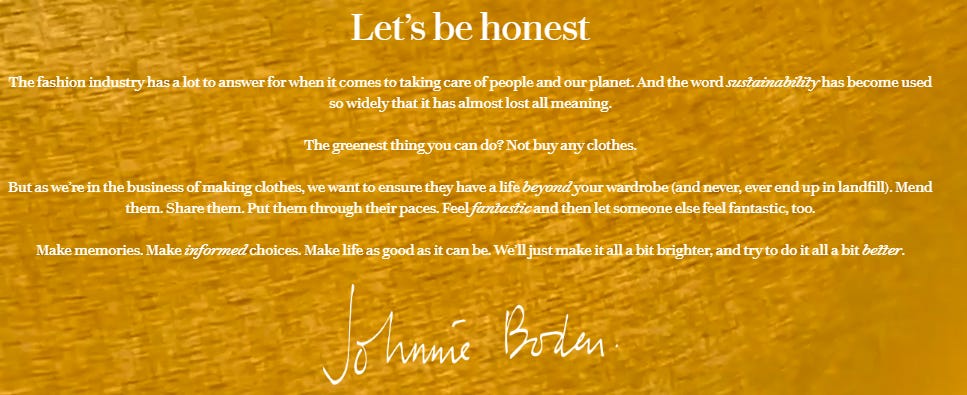

Great read! Thanks for all the insight and tips. I do my best to research before buying and almost always decide that making a garment myself is easier than knowing for sure. My sister is in the apparel industry so she is a good resource for me, but it’s a tough thing for people outside the industry to understand.
I love the scandi rec!!! Did not know that about their policies. Also yikes missed that Italy sweatshop story 🤯